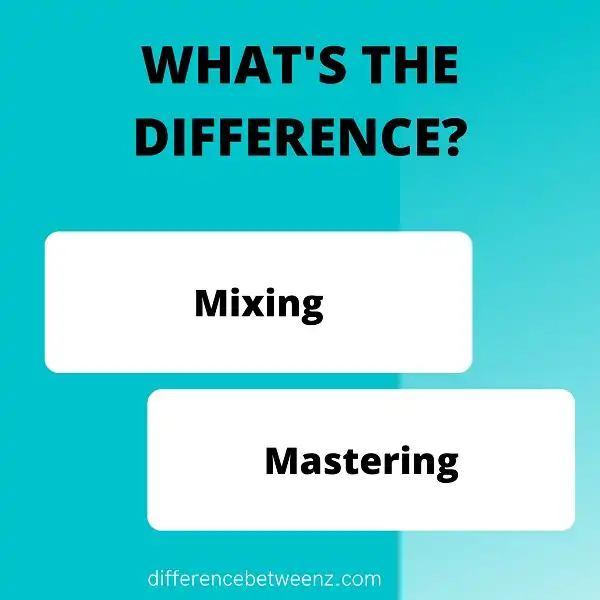Mixing and mastering are two of the most important steps in audio engineering. But what exactly is the difference between them? Understanding these processes can help you create professional-sounding recordings that stand out. In this blog post, we’ll explore each step separately to gain a better understanding of how mastering and mixing work together to shape your sound. We will look at exactly why each step is essential and uncover tips on getting exceptional results with less effort.
What is Mixing?
Mixing is the process of combining multiple audio signals together, usually with the goal of creating a more pleasing sound. Mixing can be done by hand, or with the help of special software called a digital audio workstation (DAW). Mixing often involves adjusting the levels of each individual signal, as well as EQing and adding effects like reverb and delay.
What is Mastering?
Mastering is a crucial step in audio engineering, effectively the last stage of post-production. Mastering involves taking a mix and optimizing it for a specific medium or device, such as vinyl or streaming services. Mastering engineers can help professionals create audio that is balanced, clean and has a consistent feel across multiple channels.
Mastering also corrects inconsistencies from song to song if creating an entire album, ensuring the project sounds like it’s part of one large body of work rather than separate recordings. Mastering ultimately provides the final touches on an artist’s work, pushing it to its fullest quality potential before release.
Difference between Mixing and Mastering
Mastering is the process of taking your mixed audio and getting it radio-ready or ready for distribution. This usually involves adding proper levels of loudness, EQ, limiting, and other processes that make sure your music sounds its best on all platforms. Mixing is the process of creating a great sounding mix from all of your individual tracks. This usually involves adding effects, equalization, panning, and level adjustments to each track until everything fits together perfectly. Mastering is the final step in polishing your song, while mixing is the first step in creating a great sounding recording.
Conclusion
Mastering is the process of taking your mixed audio and getting it radio-ready or ready for distribution. This usually involves adding proper levels of loudness, EQ, limiting, and other processes that make sure your music sounds its best on all platforms. Mixing is the process of creating a great sounding mix from all of your individual tracks. This usually involves adding effects, equalization, panning, and level adjustments to each track until everything fits together perfectly. Mastering is the final step in polishing your song, while mixing is the first step in creating a great sounding recording.


